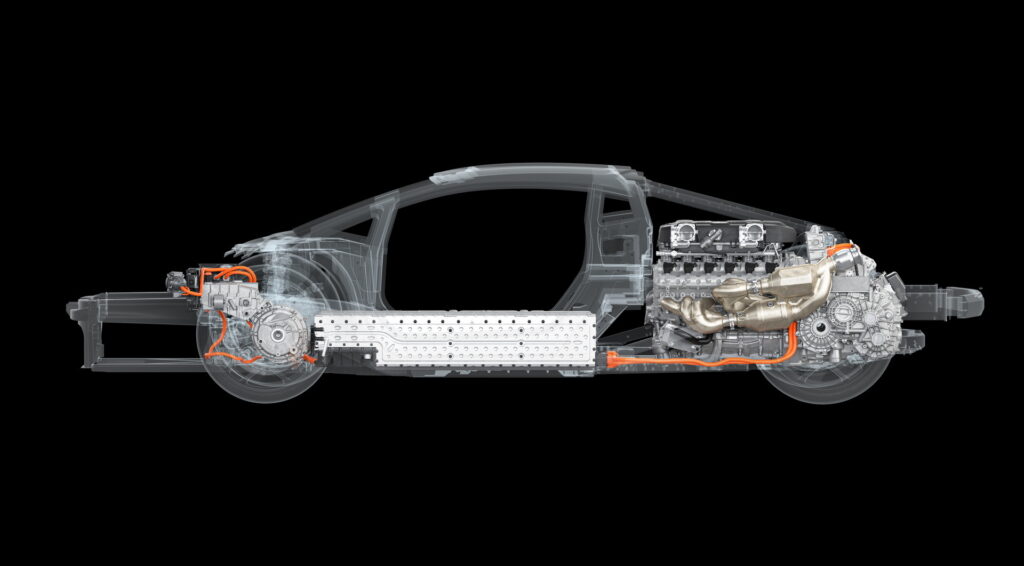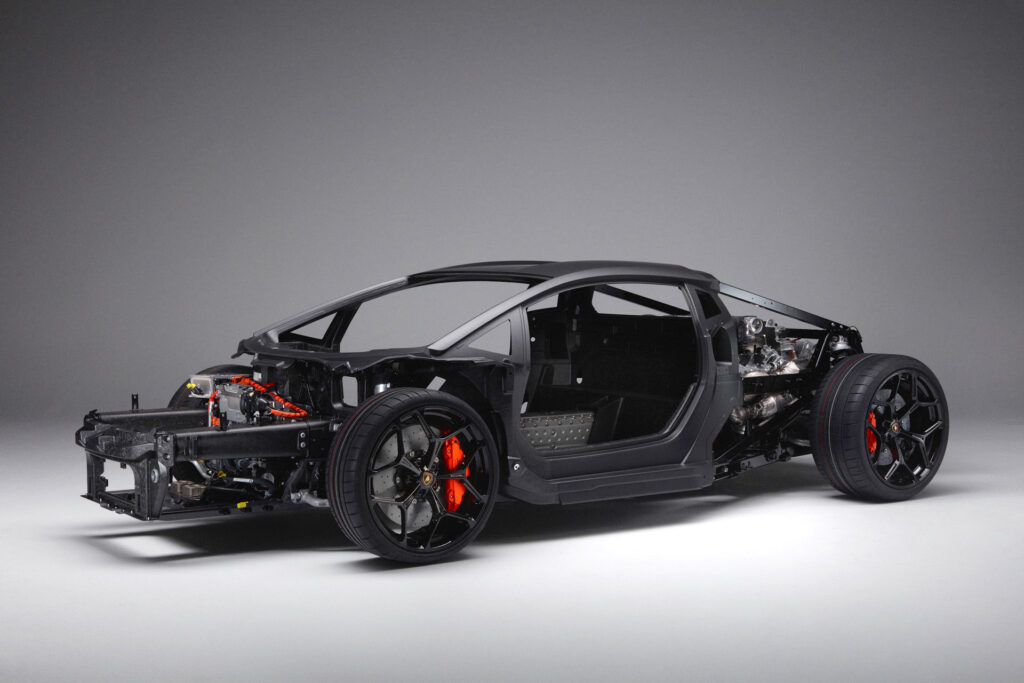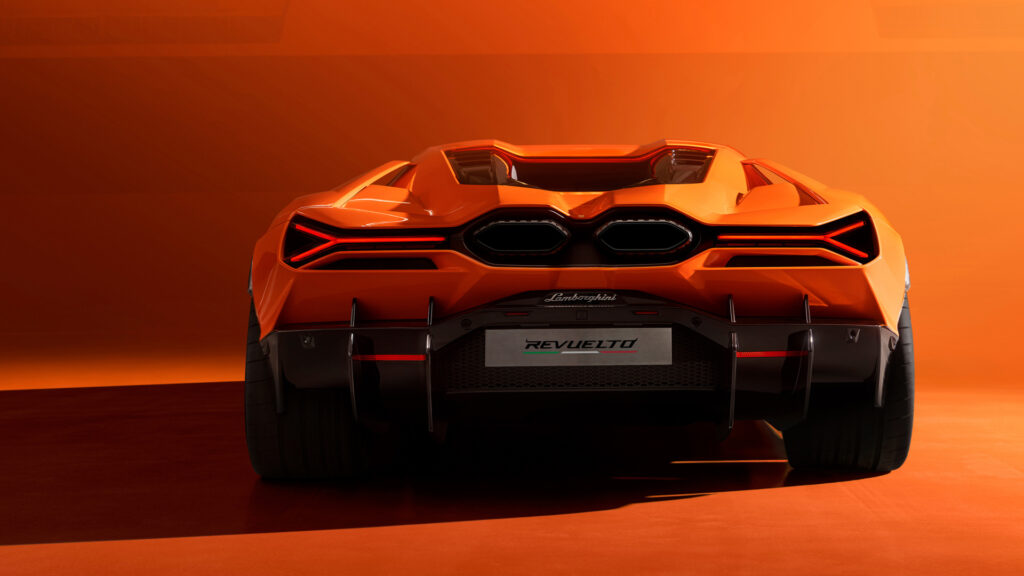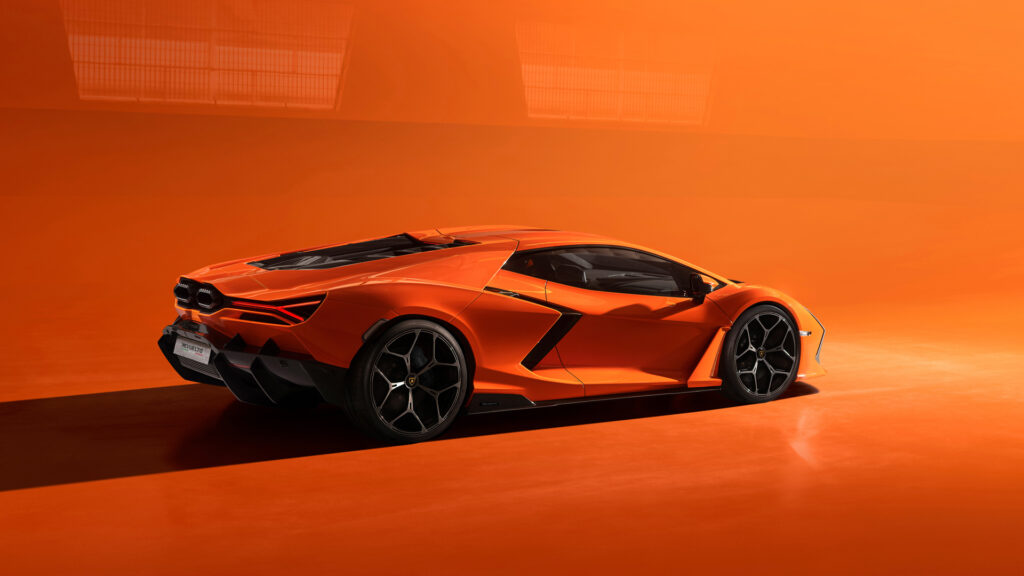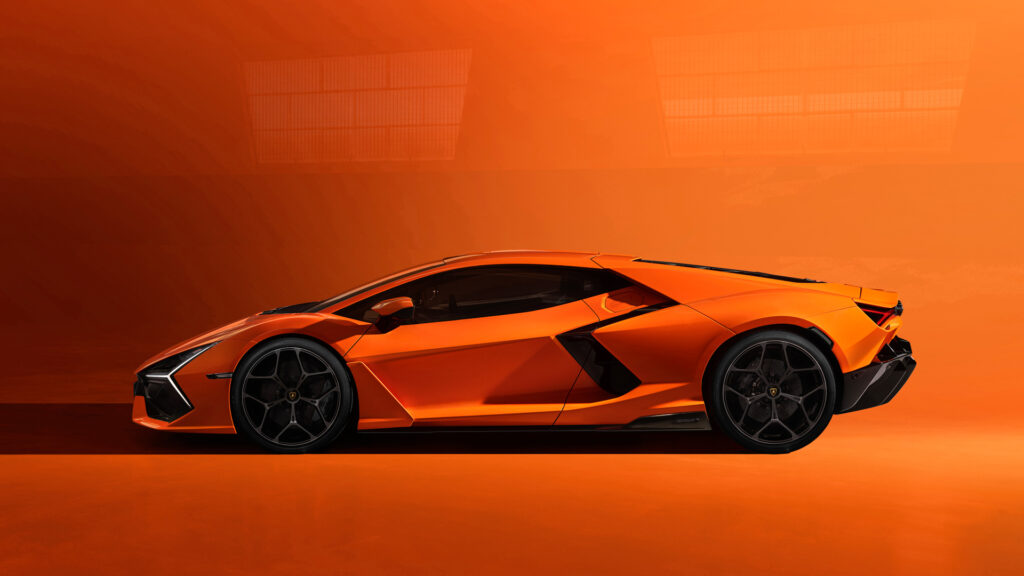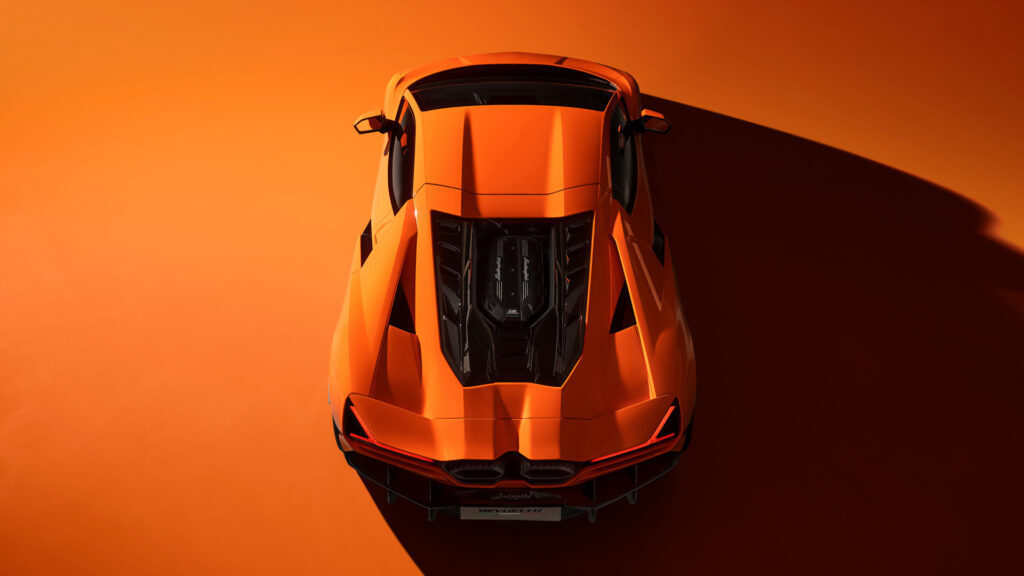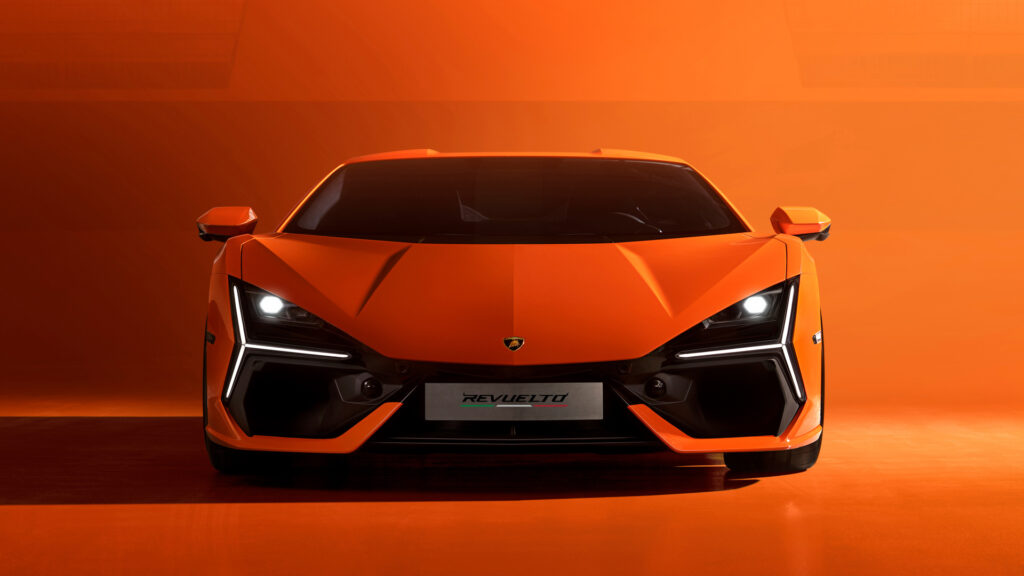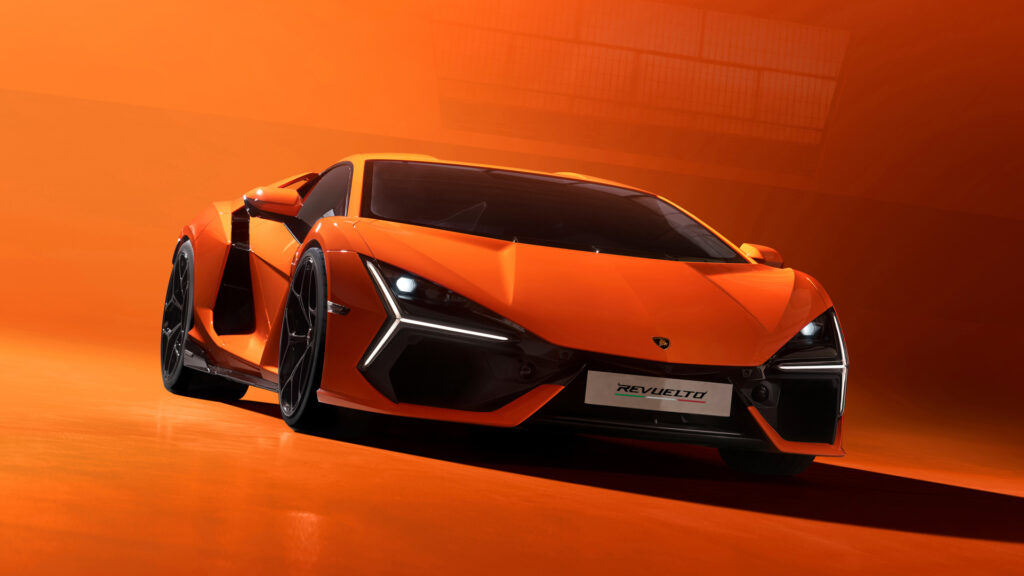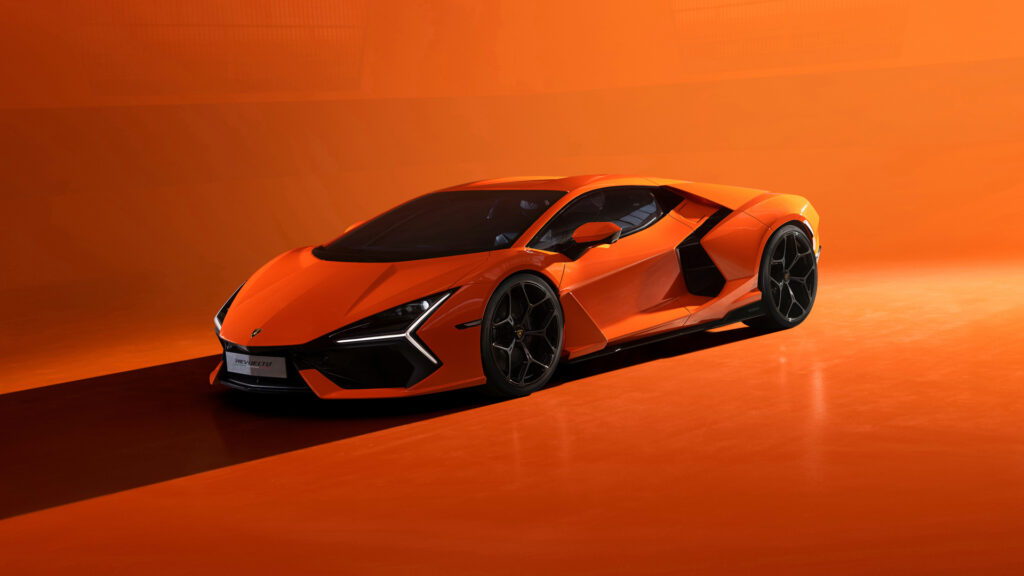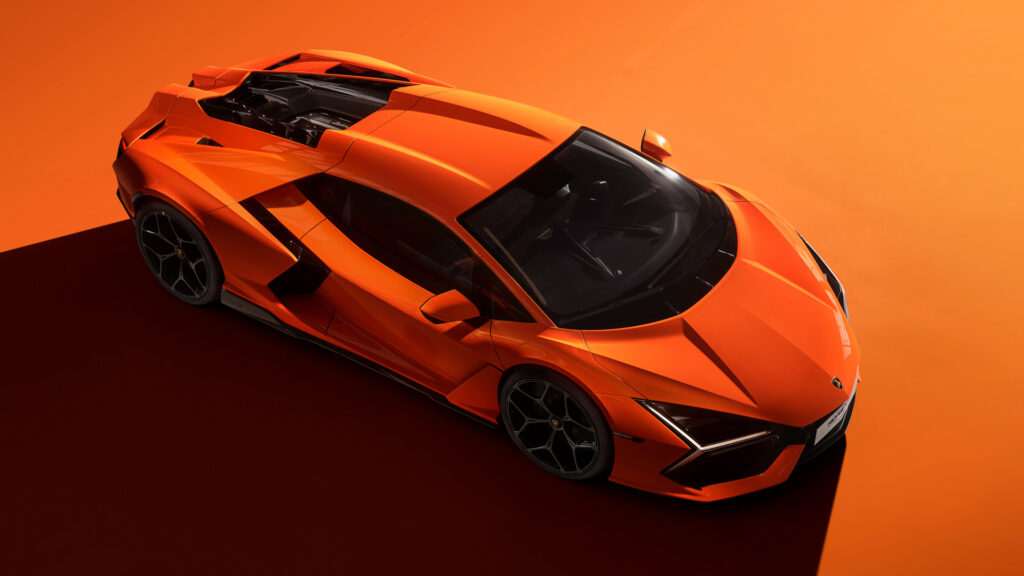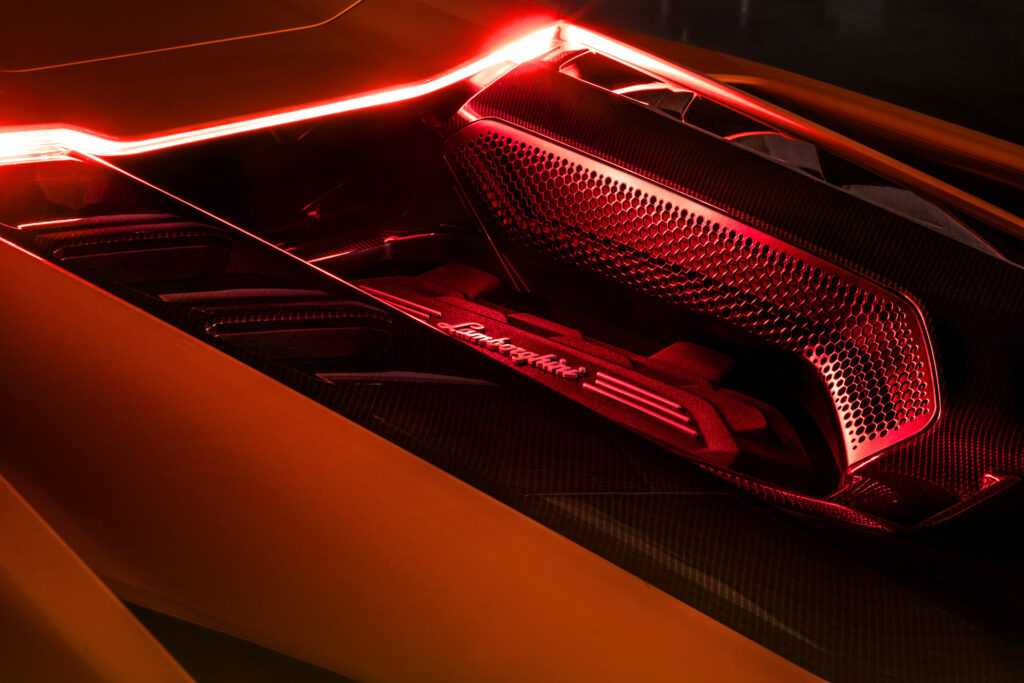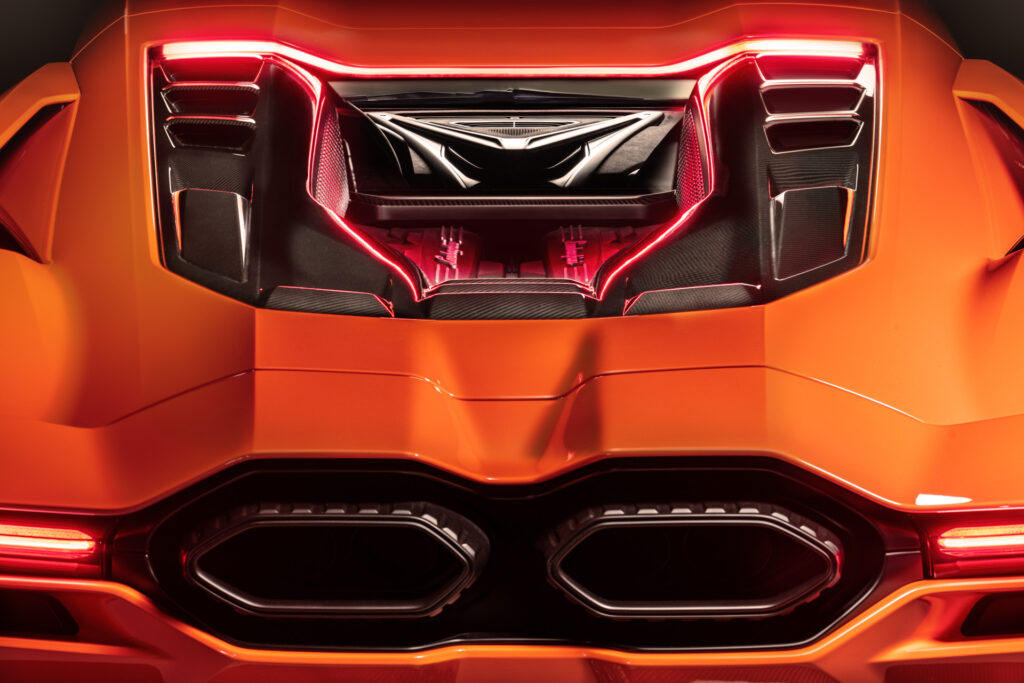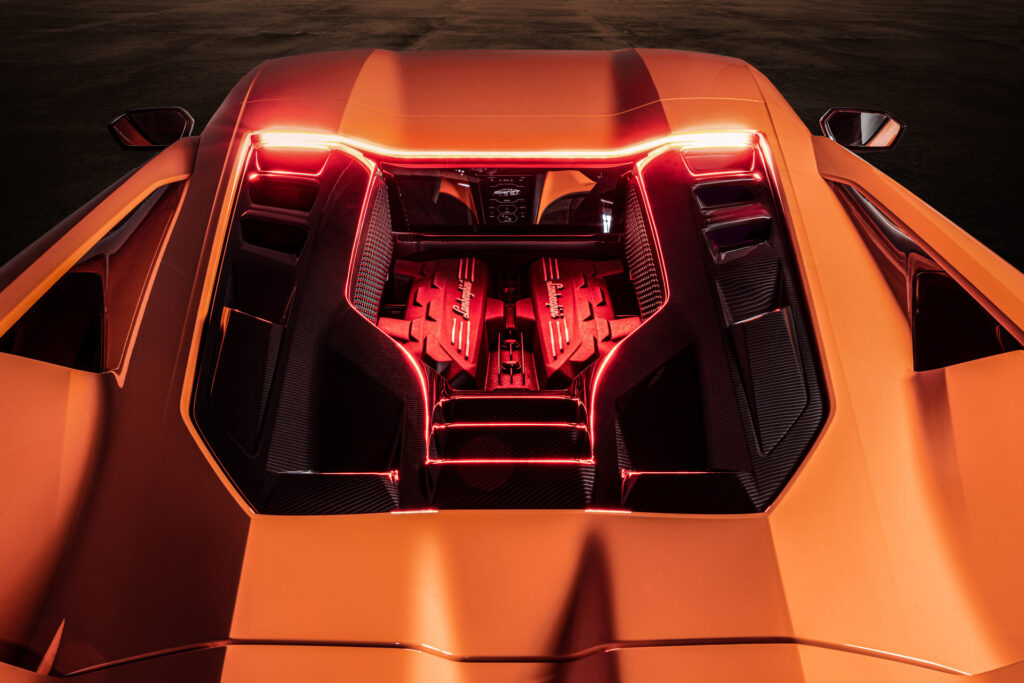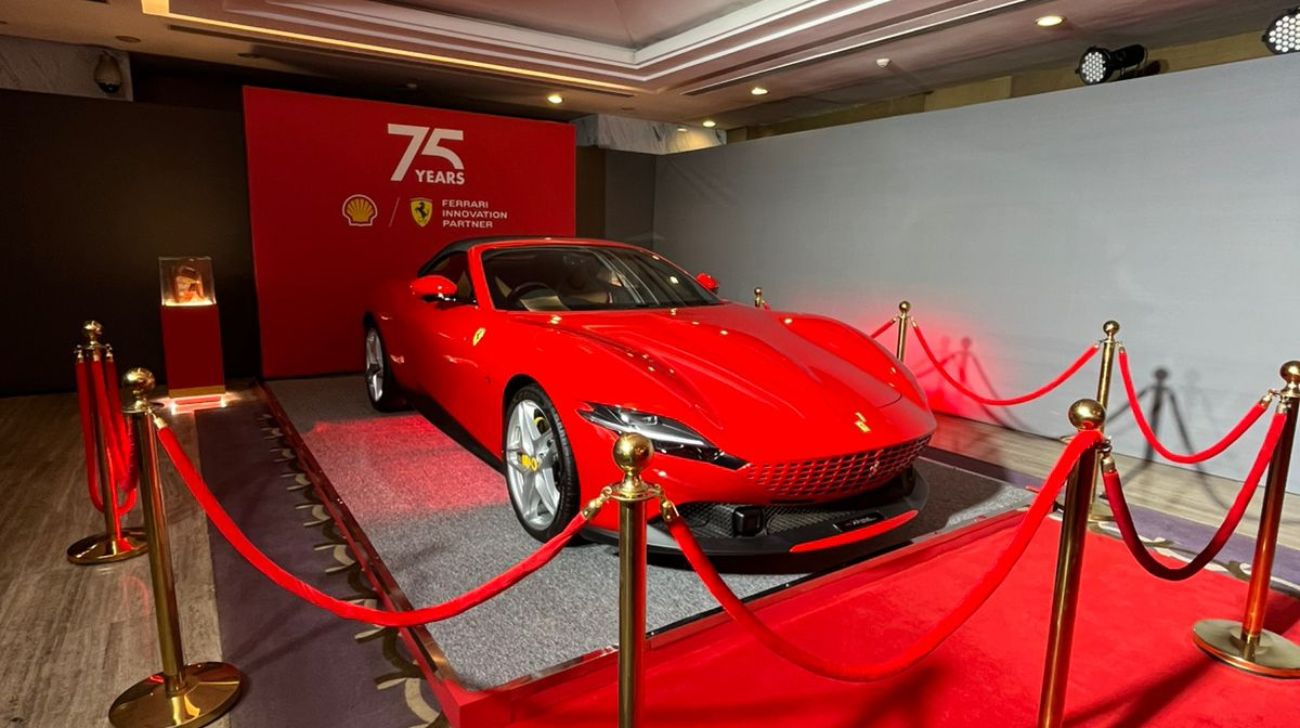We've seen the teasers, tech breakdowns, and spy images, and now we have the complete scoop on Lamborghini's forthcoming LB744 hybrid supercar, including its name. The Revuelto is named after a Spanish fighting bull, but it also means "scrambled eggs" in the same language, something Lamborghini is aware of as it introduces its first-ever full-production car with twin power sources.
Even if Lamborghini did nothing more than slap a new skin on the 12-year-old Aventador, it would be the sixth new V12-powered Lamborghini sports vehicle in 60 years. Yet, the LB744 is much more than that. It showcases numerous Lamborghini firsts and hints at how Italy's most spectacular automotive business will navigate the coming years in terms of design and engineering.
If you missed the preceding build-up articles, the most important thing to know is that Lamborghini's top-tier supercar is still powered by a V12 engine. Even better, it's still turbo-free to keep the audio and throttle response as clean as possible. The 6.5-liter L545 V12 engine is an extension of the Aventador's engine, but it has been tweaked to produce 814 horsepower (825 PS) and 535 lb-ft (725 Nm) of torque, making it Lamborghini's most powerful road-going 12-cylinder engine to date.
By comparison, the most powerful of the previous Aventadors, the LP780-4 Ultimae, only produced 769 horsepower (780 PS), thus the Revuelto is already ahead before we even get to the hybrid system. Its has three electric motors: two 148 hp (150 PS) units in the nose driving the front wheels and a third 148 hp (150 PS) unit housed with the new eight-speed dual-clutch transmission driving the rear wheels.
While the V12 is only connected to the back axle, the front motors provide all-wheel drive, torque vectoring, and make the Revuelto a front-wheel drive 178 horsepower (180 PS) EV in town when City mode is selected. All of this means that the Revuelto is a lot more serious hybrid than the limited edition Sian, which used a supercapacitor for energy storage but only delivered a paltry 34 hp (34 PS) power boost to its V12 through a single motor mounted within the gearbox and no EV-only mode.
As the red mist settles, combine the petrol and electric power plants for a total of 1,001 horsepower (1,015 PS). With launch control is engaged, the Revuelto accelerates to 62 mph (98 km/h) in 2.5 seconds, 124 mph (200 km/h) in less than 7 seconds, and a limited peak speed of 217 mph (350 km/h) in less than 7 seconds, compared to 2.8 seconds, 8.7 seconds, and 221 mph (355 km/h) for the original Ultimae. The figures place Lamborghini in the same category as its closest competition, the 986 horsepower (1,000 PS) PHEV SF90 Stradale with a V8 engine: 2.7 seconds, 6.7 seconds, 211 mph (340 km/h).
The 3.8 kWh battery charges in 30 minutes with a 7 kW supply or in six minutes using the V12 as a generator. Nevertheless, because the pack is located beneath the transmission tunnel, Lamborghini has had to make its greatest layout change since the Miura gave way to the Countach in the early 1970s. Most mid-engined senior-league vehicles have the engine near to the seats and the transmission behind it, which is coupled with a differential to drive the rear wheels. Yet, beginning with the Countach, every V12 Lambo supercar included reverse, similar to a Porsche 911's powertrain but shoved forward. The transmission was located beneath the tunnel and was linked to the differential on the other side of the V12 sandwich.
Lamborghini has chosen for a more conventional configuration this time, with the exception of the gearbox, which has been rotated 90 degrees to keep the engine small. In the 348 and F355, Ferrari used a similar mix of longitudinal engine and transverse transmission, as did Lamborghini on the track-only Essenza SCV12. The F355 introduced the supercar world to the paddle shift mechanism, a somewhat cumbersome single-clutch gearbox not dissimilar in technology or feel to the one used in the Lamborghini Aventador. Yet, over a decade after the Huracan brought dual-clutch technology to the Lamborghini range, the Revuelto also receives smooth-shifting DCT, but the V12's transmission is reportedly lighter and quicker than the one installed to the Huracan.
The combination of V12 power and hybrid tech should give the Revuelto modern refinement and performance without losing too much of that classic Lamborghini V12 supercar character, and the company’s design department appears to have been channeling the same spirit. The visual links to the Aventador are clear, and of course, the scissor doors make another appearance. But the Revuelto looks leaner and more athletic than the car it replaces, and the extensive use of Sant’Agata’s trademark Y-motif in the DRLs, the side air intakes, and the rear lights make it even more clearly identifiable as a Lamborghini.
Could Lamborghini design boss, Mitja Borkert, and his team have gone wilder with the styling? Sure, and you might think they should have done it. This isn’t a controversial or boundary-pushing design like the original Countach was, though it’s far more advanced with its use of carbon fiber now including the front subframe as well as the passenger cell. But it will probably age gracefully and you can’t grab an eyeful of the rear view with those oil barrel-size 345/30 ZR21 rear tires, the two hexagonal tailpipes ready to spit fumes in your face, or the fully-exposed engine nestling in the valley between to the rear buttresses, and tell us it lacks presence.

